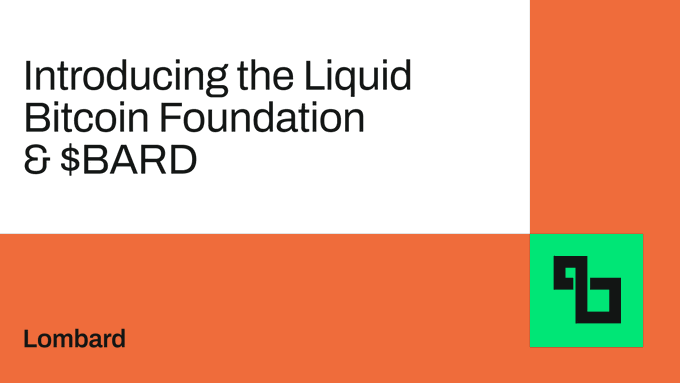
Lombard plans to roll out a BARD community sale on Buidlpad, targeting $6.75M at an implied ~$450M FDV, with 1.5% of total supply prioritized for LBTC holders and existing users. In parallel, the team announced an independent governance entity, the Liquid Bitcoin Foundation, to drive protocol development, partnerships, and ecosystem grants. This Token Insights article systematically examines Lombard’s positioning, technology, token, and roadmap.
Summary: Use LBTC to make Bitcoin assets cross-chain, yield-bearing collateral, with BARD anchoring governance and incentives; the Buidlpad community sale allocates 1.5% at a $450M FDV, alongside a new foundation to steward long-term ecosystem growth.
What is Lombard?
Lombard’s core narrative is to turn the Bitcoin capital market into infrastructure. The project introduces LBTC (Liquid Bitcoin) as a standardized “Liquid BTC” asset: on one hand, it emphasizes 1:1 native BTC backing; on the other, it enables cross-chain circulation and yield stacking so LBTC can serve across ecosystems (Ethereum, Base, Sui, etc.) as composable collateral, a settlement asset, and a strategy base. By integrating “asset standard → secure custody → multi-chain connectivity → governance incentives” into one continuum, Lombard aims to shift Bitcoin from “static holding” to “usable capital.”
The role of LBTC
According to reporting (e.g., by CoinDesk), LBTC is the “pathfinder” in Lombard’s blueprint: only if LBTC’s usage radius keeps expanding will there be sufficient demand to absorb subsequent BARD governance, subsidies, and ecosystem distributions. For developers, LBTC is the key interface; for institutions, LBTC is a verifiable, cross-domain efficiency upgrade for BTC.
Technology and security
Lombard uses a signer federation composed of multiple institutions plus audits to safeguard LBTC minting and redemption, aiming to reduce single-custodian and bridge systemic risks. Technically, Lombard prefers “conservative at the asset layer + open at the interoperability layer”: the asset side stresses 1:1 safety and proof of reserves; the interoperability side brings LBTC to EVM and non-EVM networks via standardized gateways, and layers on restaking and yield-aggregation tools. Thus, Lombard keeps the base conservative while enabling LBTC to gain real usage and fee yield on emerging chains.
Compliance approach
Lombard embeds “permissions and processes” at both on-chain and organizational layers: on-chain, multi-sig, allowlists, and contract audits constrain key operations; organizationally, a foundation-led governance process and external audits create traceable accountability. This dual structure underpins sustainable compliance for institutional integrations and ecosystem grants.
Tokenomics (BARD): supply, utility, and allocation
BARD is Lombard’s native governance and ecosystem token. As indicated by The Block and related materials, the Buidlpad community sale will distribute 1.5% of total BARD supply, targeting $6.75M, implying an FDV of ~$450M, with priority for LBTC holders and existing users. Utilities include protocol governance, ecosystem incentives, partner enablement, and potential fee discounts; specifics depend on the forthcoming whitepaper and governance proposals. Given the small allocation, early price discovery will rely more on market making and real usage; the foundation’s budget cadence will be important for anchoring expectations.
The role of the Liquid Bitcoin Foundation
Lombard also announced the Liquid Bitcoin Foundation as an independent governance body responsible for protocol development, ecosystem grants, and external partnerships. The foundation aligns “LBTC usage growth” with “BARD governance budget”: the former generates real demand and fee income, while the latter channels developers and partners via grants and incentives—bringing token value capture into a quantifiable governance path.
Ecosystem partnerships and funding background
In 2024, Lombard closed a $17M seed round led by Polychain Capital, with participants including Franklin Templeton, Bybit, and YZi Labs (formerly Binance Labs). This backing equips the project for multi-chain integrations, compliance advisory, and ecosystem BD. On ecosystem growth, Lombard partners with L1/L2 foundations, restaking, and settlement infrastructure to bring LBTC to more networks and use cases—pivoting growth from single-chain TVL to cross-chain “real usage.”

Recent presale and eligibility details
For the Buidlpad community sale, allocation will prioritize “LBTC-first,” encouraging holders and active users to participate in early governance and ecosystem building. Beyond eligibility checks, KYC, and allotments, the team will publish unlock and vesting schedules so participants can size positions by time horizon and risk appetite. Narratively, a mix of “small allocation, market-driven pricing, foundation stewardship” aims to reduce exogenous shocks in early secondary trading and shift focus to medium-term delivery.
Future plans and roadmap
Mid-term, Lombard targets LBTC as “cross-domain universal collateral,” expanding to more L1s/L2s and integrating deeply with stables, lending, derivatives, and settlement engines. Long-term, BARD’s governance budget and ecosystem incentives aim for a sustainable flywheel: higher cross-chain TVL and real usage attract more partners and funded projects, which in turn expand LBTC’s utility radius. The foundation will manage disbursement cadence via public proposals and quarterly reports to make growth more predictable.
FAQ
What are the key parameters of this BARD sale?
The plan is to allocate 1.5% of total BARD via Buidlpad, targeting $6.75M at an implied ~$450M FDV, with priority rules for LBTC holders and existing users.
Why prioritize LBTC holders?
LBTC must become cross-chain, usable BTC collateral. Priority allocation boosts loyalty and real usage, ensuring BARD governance concentrates in the hands of “users.”
How will the foundation influence the token and ecosystem?
The Liquid Bitcoin Foundation will tie BARD’s budget and grants to usage and R&D milestones, improving capital efficiency and traceability through governance and reporting.
What does the funding background imply?
A Polychain-led seed with multiple institutions signals top-tier capital’s recognition of the “BTC capital markets” narrative and provides resources for compliance and integrations.
What should users watch before participating?
Monitor BARD unlock/vesting, the foundation’s disbursement rules and transparency, LBTC’s real multi-chain usage data, and security audits of cross-chain and custody paths.
Key Takeaways
Lombard grounds on LBTC and uses BARD for governance and ecosystem budgeting; this community sale targets $6.75M for 1.5% at a $450M FDV.
The Liquid Bitcoin Foundation is established to steward protocol development, partnerships, and grants over the long term.
Multi-chain expansion (e.g., Sui) validates BTC as universal collateral; next, track unlocks and real usage metrics.




